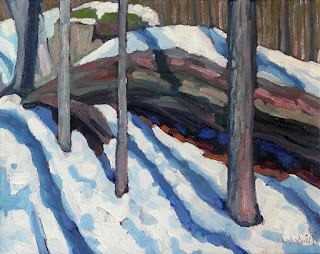This is Wicks Pick Lodge on the western shore of Singleton Lake. The structures were built in 1933 by Bill Shaw for Dr. Bert Wickware of Ottawa. The lodge is located on the shore of Singleton Lake opposite the intersection of Ellisville Rd and the Outlet Road (Highway Number 3). The Lodge remains a summer residence for Bert's descendants. Besides the store and gas pump, there were sleeping cabins along the Outlet Road on either side of the lodge. It was a thriving fishing camp for American tourists run by Bill Shaw until 1937. That was the year between the Great Depression and the start of World War 2 when Bill Shaw purchased the Argyle Hotel on Red Horse Lake and renamed it as Shawmere. Those Shawmere Cottages are still in business and the location of a long running Climate Station that collects valuable weather information (www.shawmere.com).
I would paddle around Singleton Lake whenever the water would call to me. This particular Sunday morning in early June was a memorable paddle. The remembrance was made more tangible by the painting that came out of it. Art is all about making memories for me and this is a good one. The paddle was also taken to check on the welfare of the loon family. They did fine in 2019 and produced two chicks. The older and larger chick even helped to care for the smaller loon late in the season. Nature is inspiring and I continue to learn from it.
There is a problem with having more time to paint during COVIID isolation. The problem is having more time to paint and the luxury of being free to study and contemplate each brush stroke. The potential for more strokes and dabs of colour can steal the life from the painting and turn it more in a labour than a luxury. I was in danger of over-working Wick's Pick Lodge. I was having lots of fun but had to step away from the easel before I killed it with a hundred too many strokes. I was still using my bright palette of paint that I had squeezed out for #2465 "Chaffey's Homestead Barn".
For this and much more art, click on Pixels. Thank you.

































